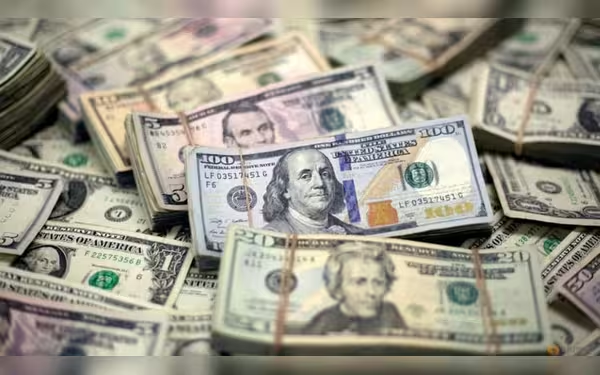Thursday, November 7, 2024 05:36 AM
Dollar Declines as Traders Adjust Trump-Linked Positions
- Dollar index falls 0.24 percent amid Trump trade unwinding.
- Euro and Mexican peso strengthen against the dollar.
- Federal Reserve expected to cut rates by 25 basis points.
 Image Credits: channelnewsasia
Image Credits: channelnewsasiaThe U.S. dollar declines as traders unwind Trump trades, with expectations of a Federal Reserve rate cut amid shifting political sentiments.
The U.S. dollar experienced a decline on Monday as traders began to unwind their positions linked to the speculation surrounding former President Donald Trump’s potential victory in the upcoming presidential election. This shift in sentiment comes as investors reassess the likelihood of a Republican sweep, which had previously been bolstered by prediction markets and polling data.
Karl Schamotta, the chief market strategist at Corpay in Toronto, noted, "The Trump trade is unwinding this morning." He explained that there has been a significant pullback in expectations for a Republican win, particularly as polls indicate a tighter race. Notably, Democratic Vice President Kamala Harris has gained traction in some surveys, and her standing on election gambling platforms has improved, although Trump still maintains a lead on certain sites.
Trump's policies, particularly regarding tariffs and immigration, are perceived as likely to increase inflation. This scenario could lead to higher long-term U.S. Treasury yields and a stronger dollar. However, Schamotta cautioned that "tariffs and just sheer uncertainty is expected to harm the outlook for other currencies." As a result, the dollar index fell by 0.24 percent, settling at 103.69.
In contrast, the euro rose by 0.6 percent to $1.0899, while the dollar weakened by 0.76 percent against the Japanese yen, trading at 151.82. The one-week implied volatility options for the euro/dollar pair reached their highest levels since March 2023. Additionally, the offshore Chinese yuan appreciated by 0.53 percent to 7.102 per dollar, and the Mexican peso strengthened by 1.49 percent to 19.992. These currencies had previously weakened due to fears of new tariffs under a Trump administration.
Analysts suggest that Trump may implement more favorable policies for cryptocurrencies compared to Harris. As the Federal Reserve prepares for its two-day meeting concluding on Thursday, it is widely anticipated that the central bank will cut rates by 25 basis points. Investors are keenly watching for any indications that the Fed might forgo a rate cut in December.
The recent jobs report for October revealed that employers added significantly fewer jobs than economists had predicted, raising concerns about the labor market's strength. Factors such as recent hurricanes and labor strikes contributed to the disappointing job gains. This report followed a stronger-than-expected job growth in September, which had led investors to anticipate fewer rate cuts from the Fed.
Currently, traders are pricing in an 83 percent chance that the Fed will also implement a rate cut in December, according to the CME Group’s Fed Watch Tool. Meanwhile, the Bank of England is expected to meet on Thursday and cut rates by 25 basis points, while the Riksbank is projected to ease by 50 basis points. The Norges Bank is anticipated to maintain its current rates. The Bank of England's decision has been complicated by a recent selloff in gilts, which has also negatively impacted the pound.
As the global economic landscape continues to shift, it is essential for investors and traders to stay informed about these developments. The interplay between political events and economic indicators can significantly influence currency markets, making it crucial to remain vigilant and adaptable in these uncertain times.













